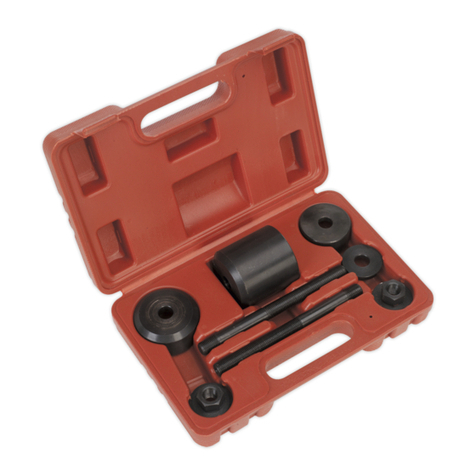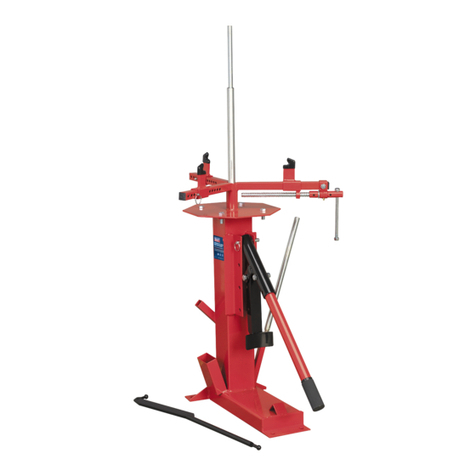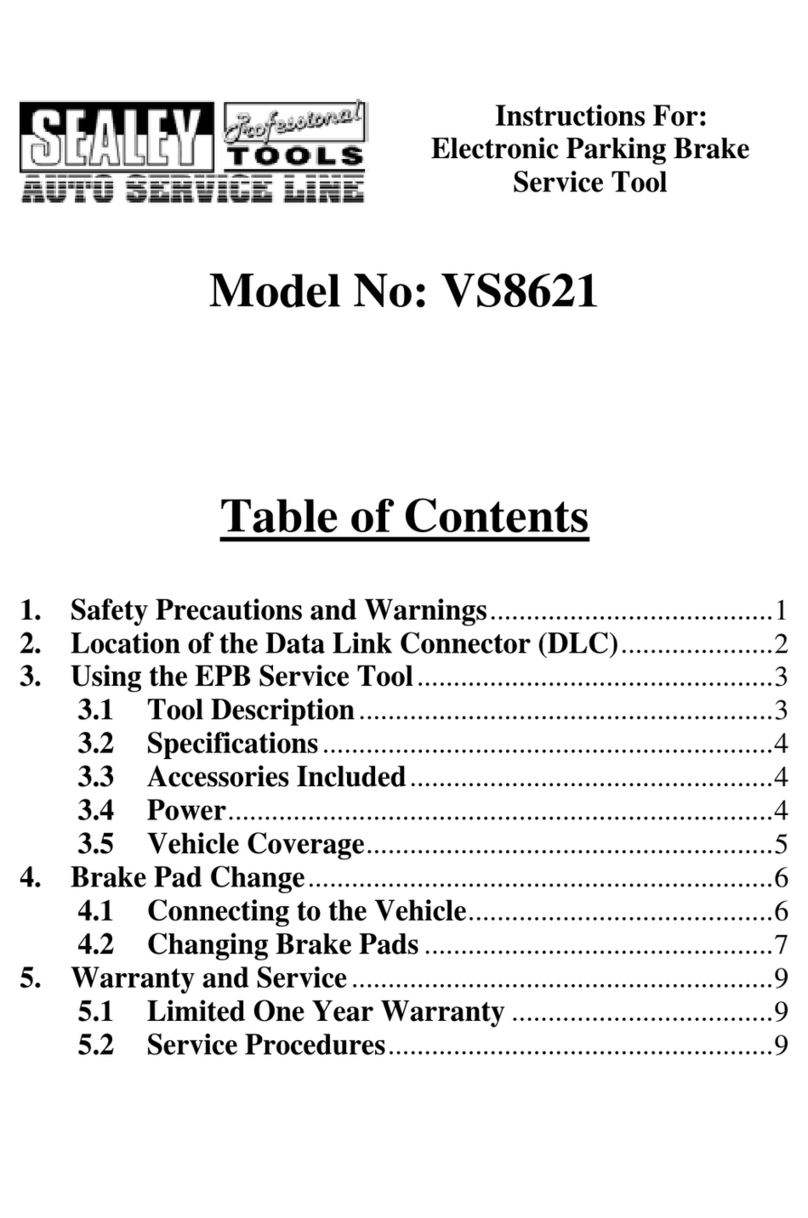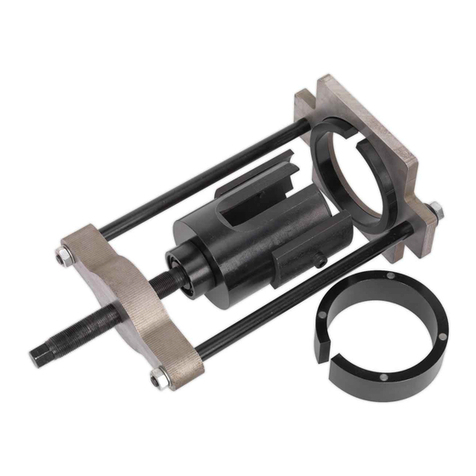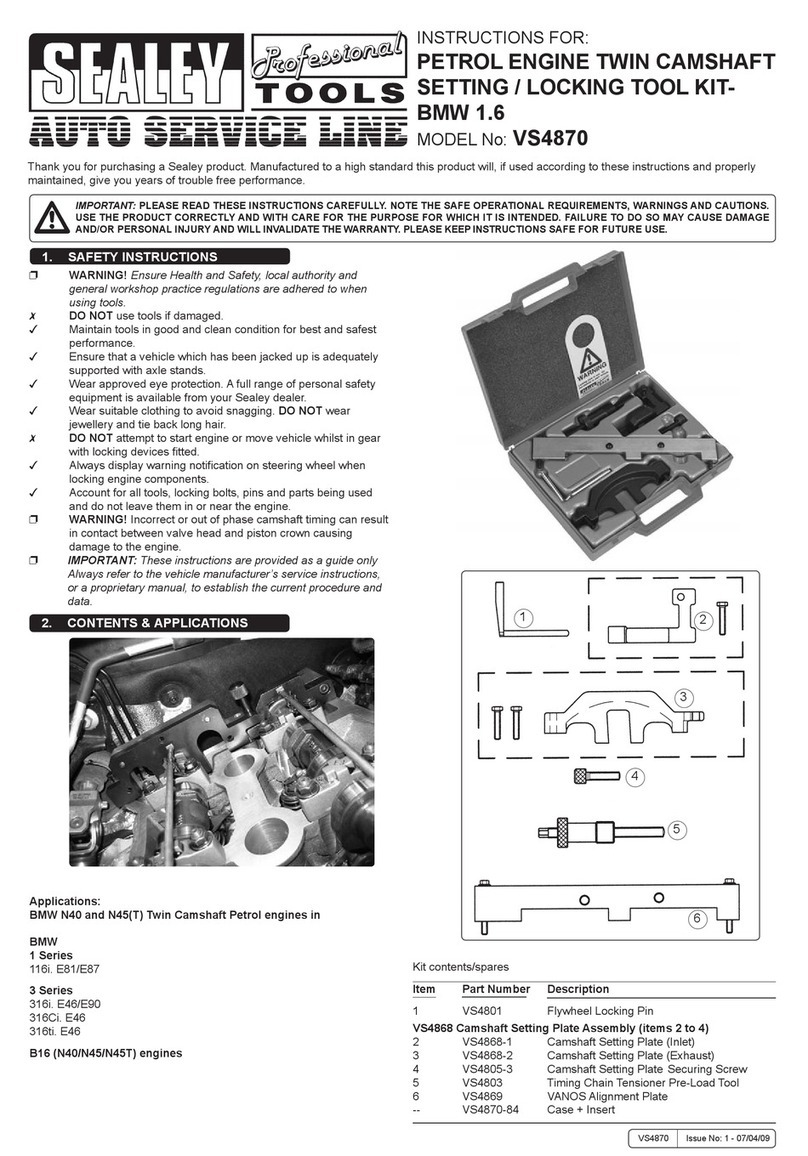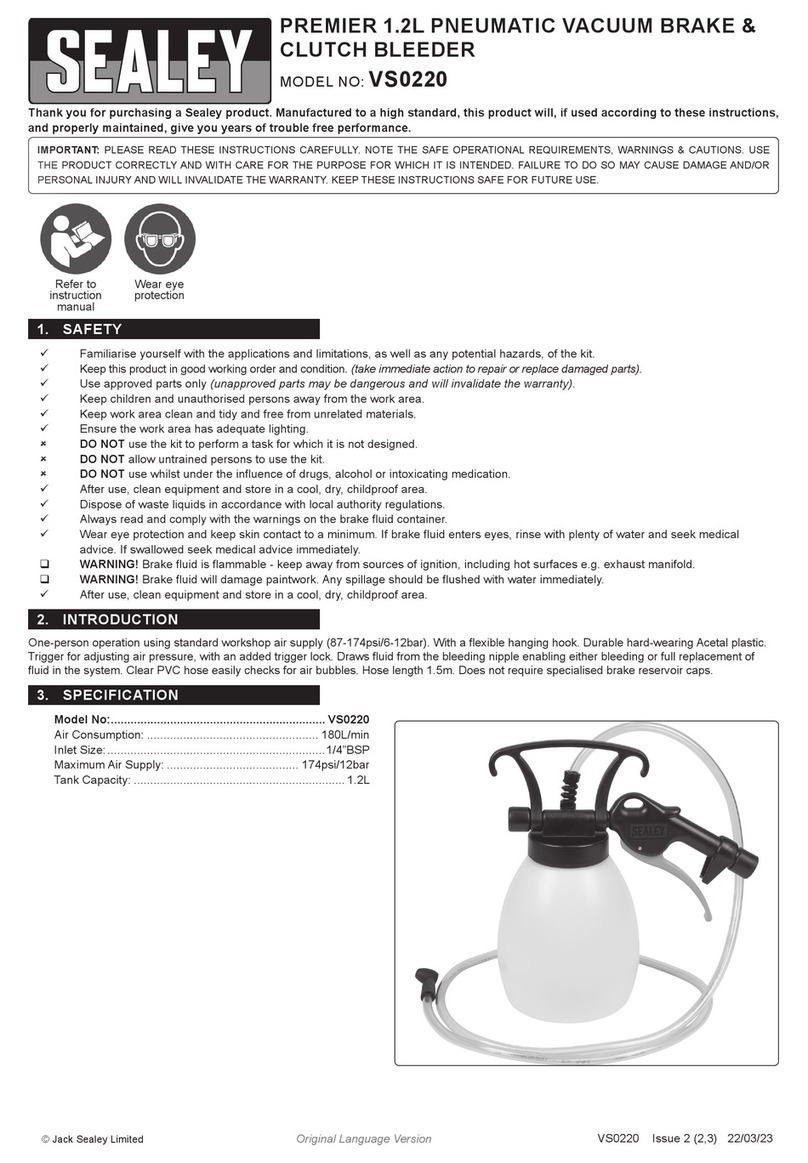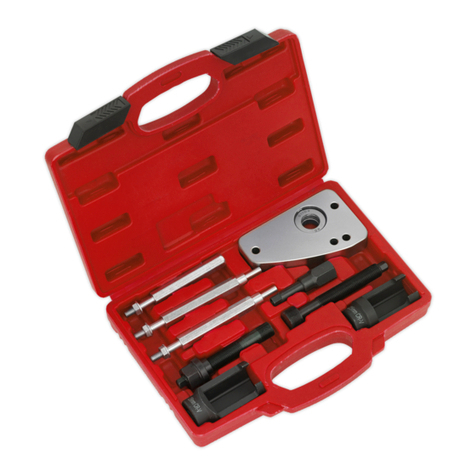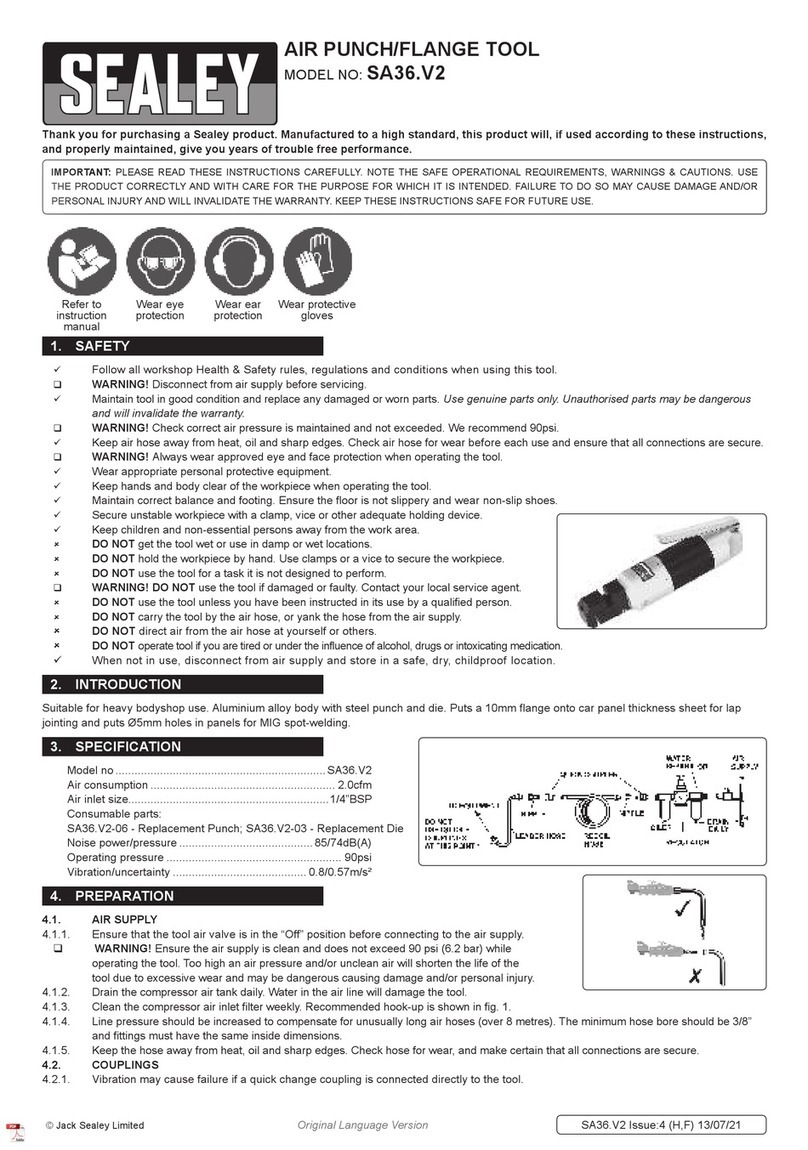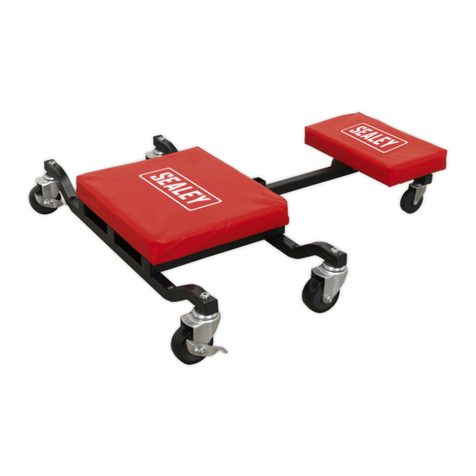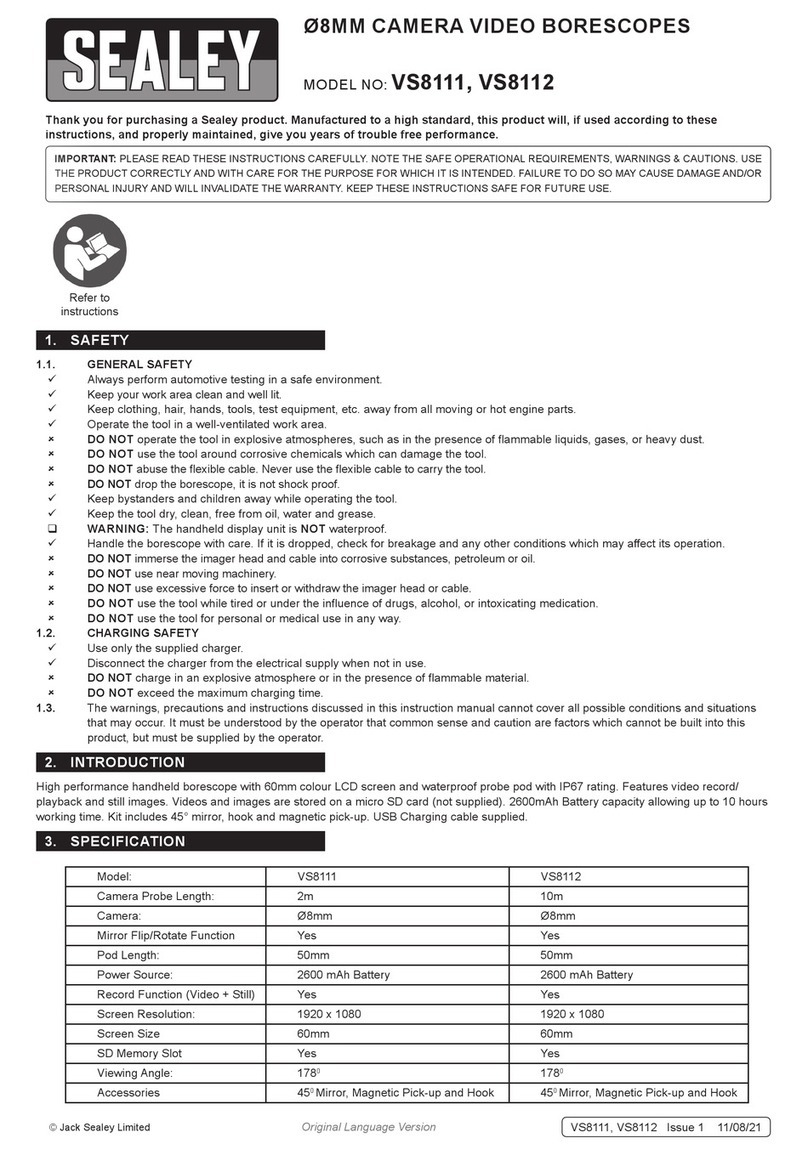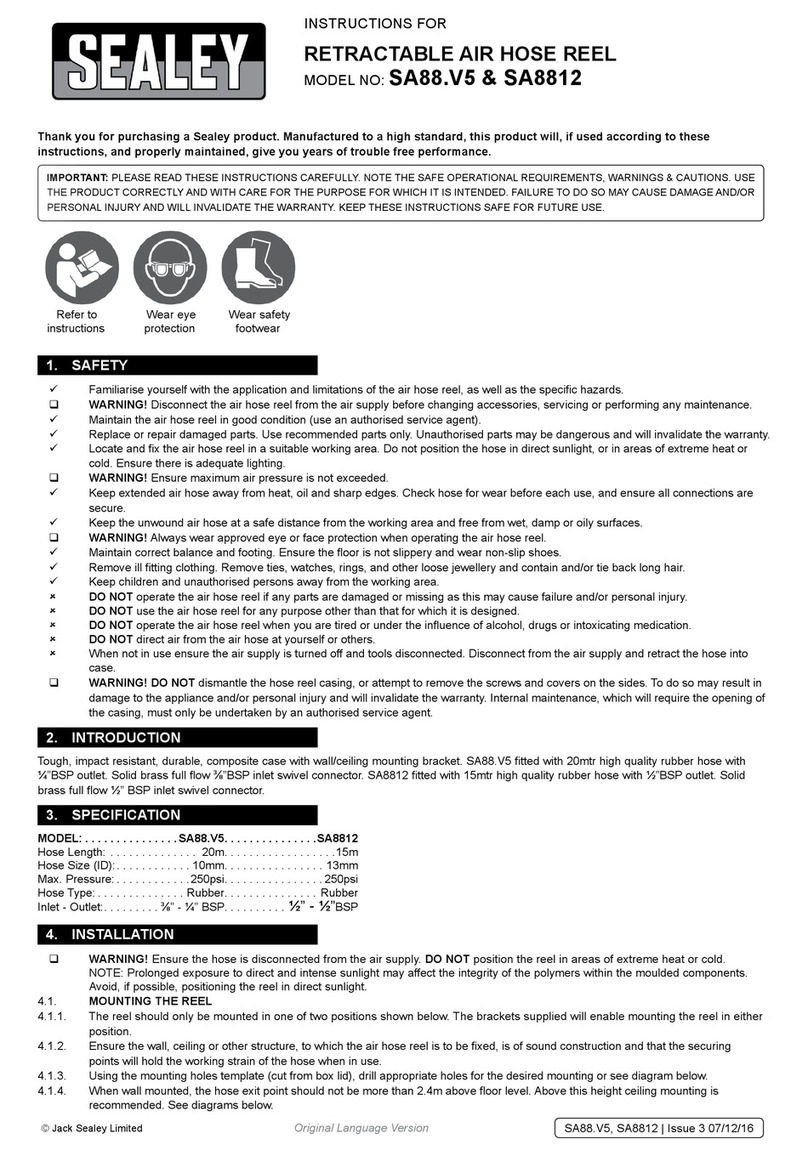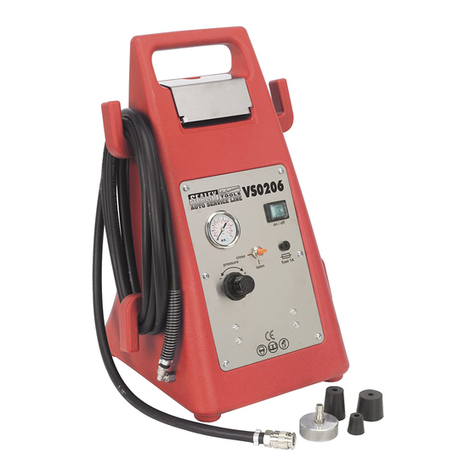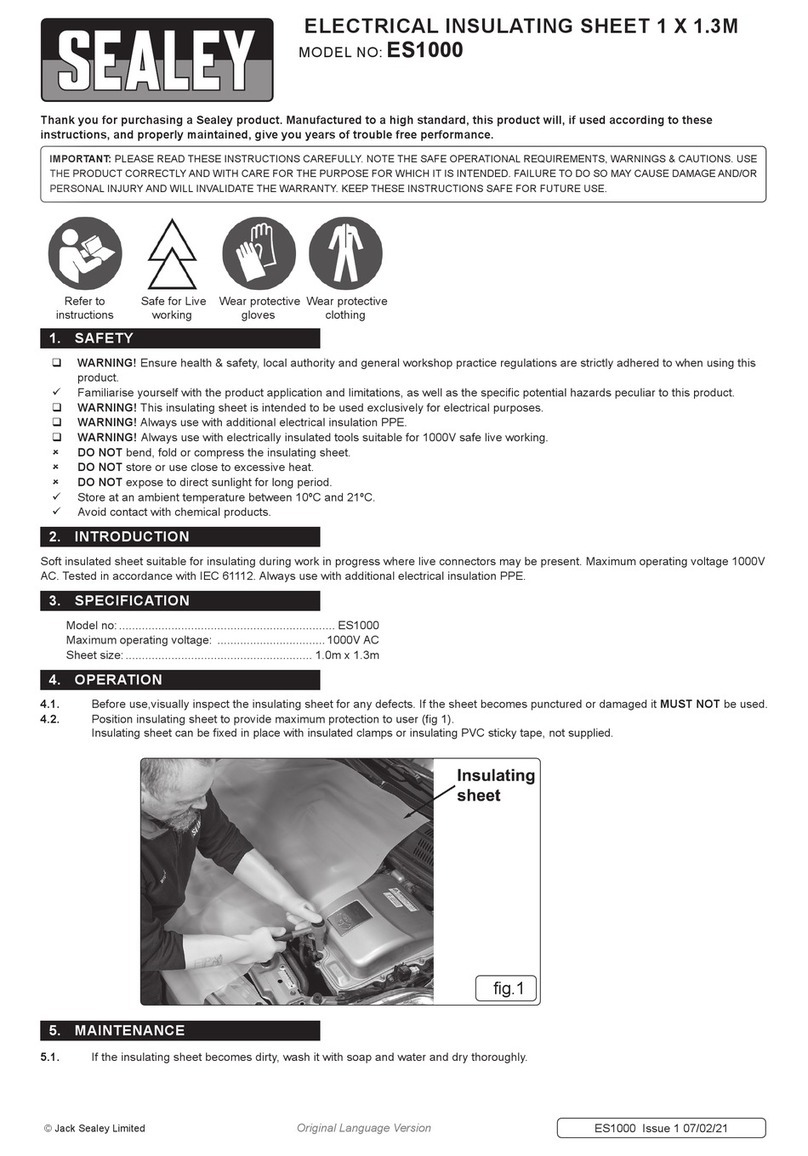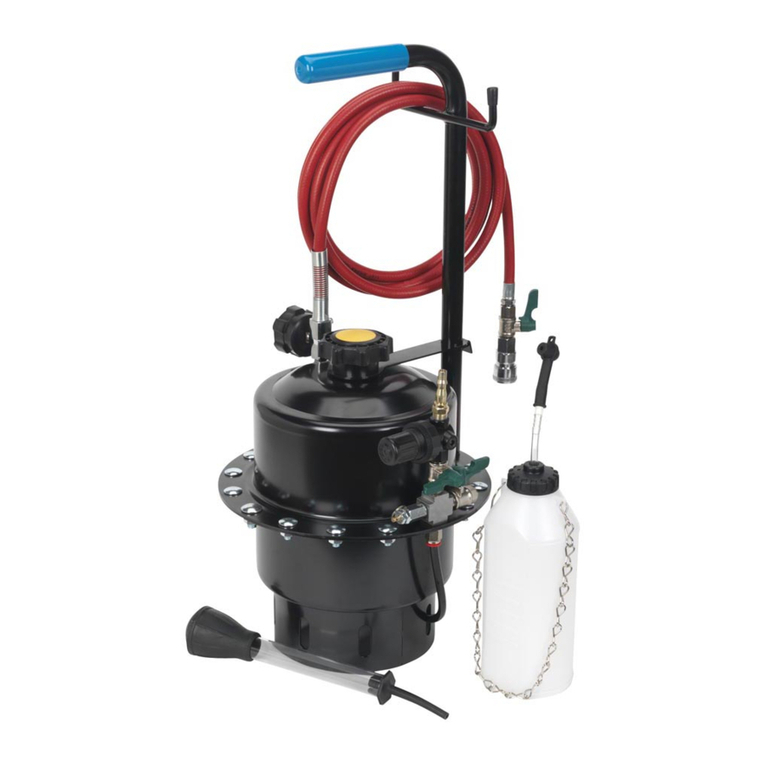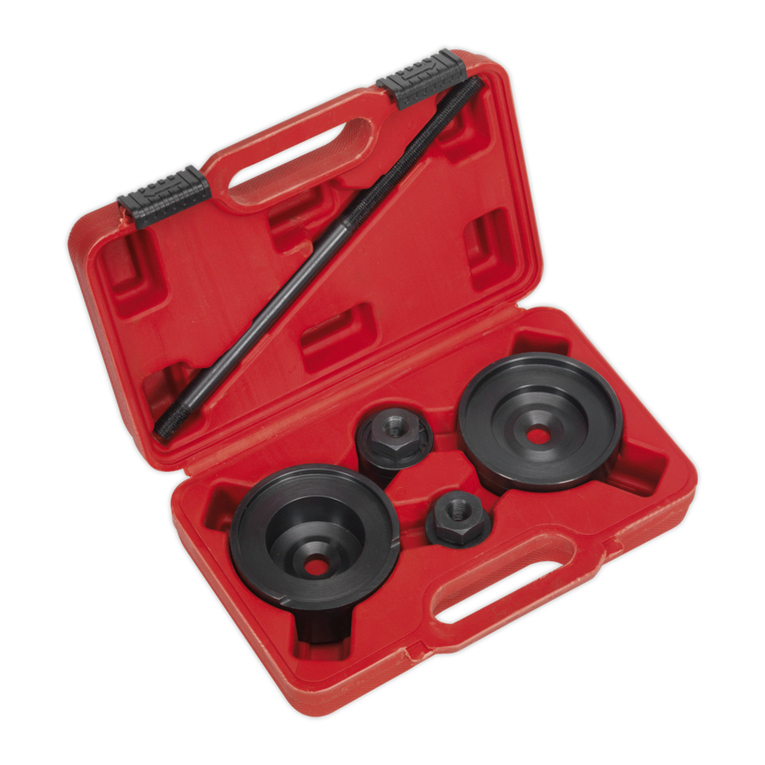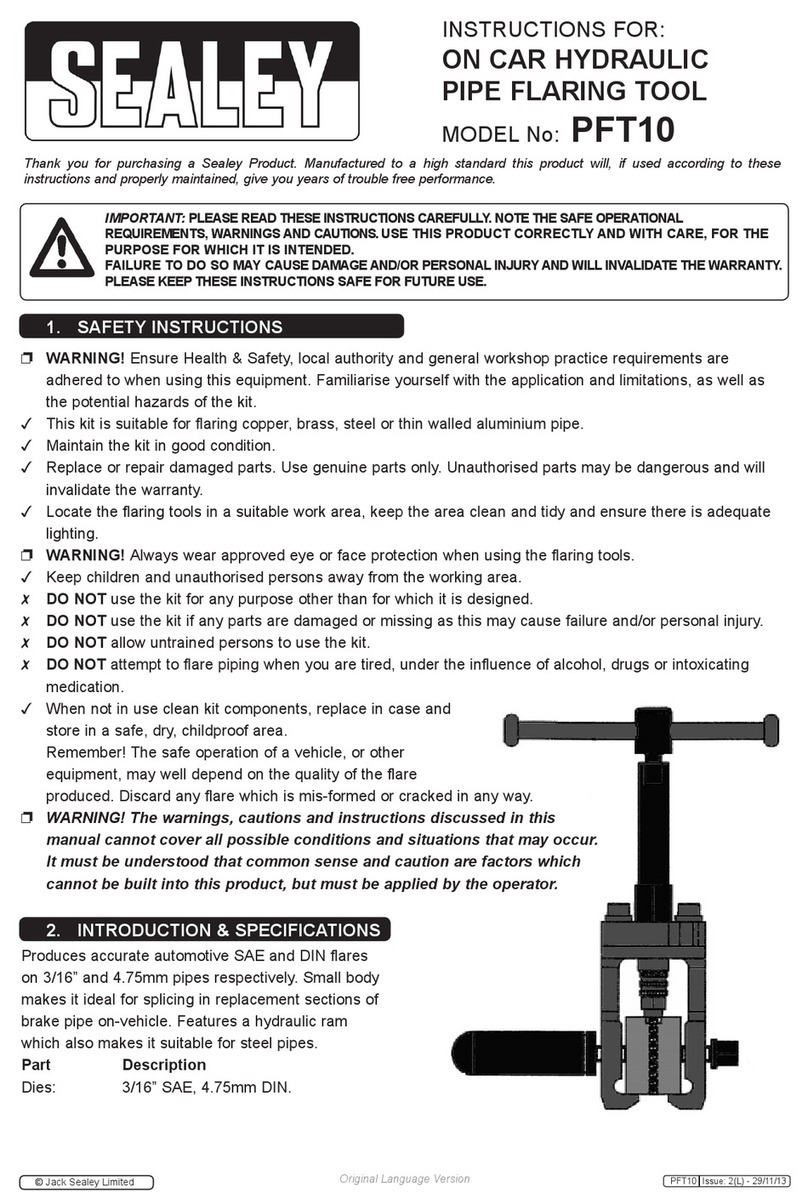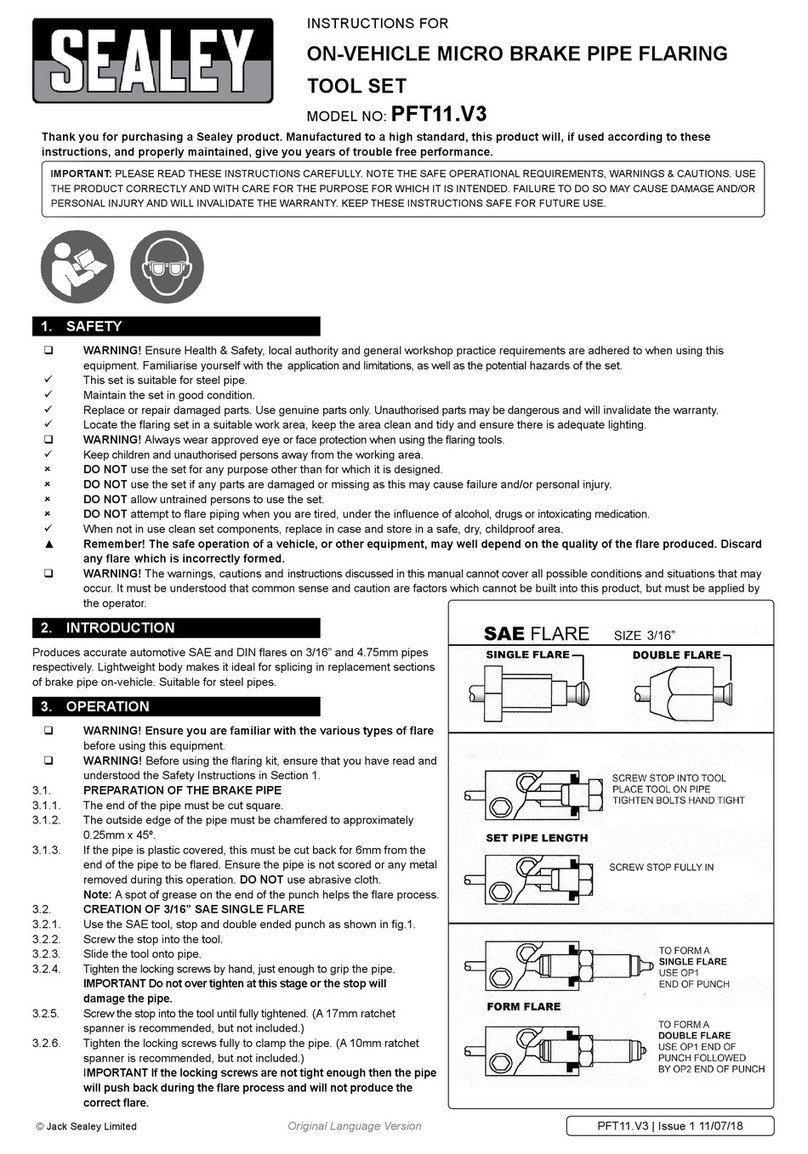
INSTRUCTIONS FOR:
CV JOINT BOOT TOOL
MODEL NO. BSL100
Thank you for purchasing a Sealey product. Manufactured to a high standard this product will, if used according to these instructions
and properly maintained, give you years of trouble free performance.
BSL100 - 1 - 110603
1. SAFETY INSTRUCTIONS
IMPORTANT: PLEASE READ THESE INSTRUCTIONS CAREFULLY. NOTE THE SAFE OPERATIONAL REQUIREMENTS, WARNINGS & CAUTIONS.
USE THE PRODUCT CORRECTLY AND WITH CARE FOR THE PURPOSE FOR WHICH IT IS INTENDED. FAILURE TO DO SO MAY CAUSE
DAMAGE OR PERSONAL INJURY, AND WILL INVALIDATE THE WARRANTY. PLEASE KEEP INSTRUCTIONS SAFE FOR FUTURE USE.
2. INTRODUCTION & SPECIFICATION
This innovative tool saves time, money and frustration by enabling the installation of flexible steering and CV boots without removing the axle
from the vehicle or the CV joint from the axle. No effort and no mess is involved. Saves on labour time by up to 70% and prevents damage to
the CV joint. The tool has a composite body with simple control valve and works from the standard workshop air supply.
SPECIFICATION.
CV joint diameter . . . . .20-95 mm Weight . . . . . . . . . . . .2.5kg Max air pressure . . . .125psi Air inlet size . . . . .1/4BSP
1.1 GENERAL SAFETY
3Carefully read these operating and safety instructions before commencing assembly and before use. Keep them for future reference.
3This tool should only be used by properly trained operators.
3Keep the work area clean, uncluttered and ensure there is adequate lighting.
3Maintain correct balance and footing. Ensure the floor is not slippery and wear non-slip shoes.
3Remove ill fitting clothing. Remove ties, watches, rings, and other loose jewellery, and contain and/ or tie back long hair.
3Keep children and unauthorised persons away from the working area.
3Keep the boot tool away from fire, heat and chemicals.
7DO NOT use the boot tool for any purpose other than that for which it is designed.
7DO NOT operate the boot tool when you are tired, under the influence of alcohol, drugs or intoxicating medication.
pWARNING! Ensure Health & Safety, local authority, and general workshop practice regulations are adhered to when using this equipment.
1.2 COMPRESSED AIR SAFETY
3Make sure that the air pressure system contains no liquids, including water, but only dry air.
3Keep air hose away from heat, oil and sharp edges. Check air hose for wear before each use, and ensure that all connections are secure.
3When not in use disconnect from the air supply, de-pressurise the boot tool, and store in a safe, dry, childproof area
7DO NOT leave the boot tool unattended when fully pressurised.
7DO NOT carry the by the boot tool hose, or yank the hose from the air supply.
7DO NOT allow the air pressure to exceed 9 bar (125 psi). High air pressure can cause irreversible damage to the tool and/or the surroundings.
pWARNING! Disconnect the boot tool from the air supply before servicing or performing any maintenance.
1.3 MECHANICAL SAFETY
3Maintain the boot tool in good condition (use an authorised service agent).
3If the tool falls or is knocked, stop operation and check for any damage.
3Do not erase or damage any of the markings,symbols or text printed onto or moulded onto the surfaces of the Boot tool.
3In case of mechanical fault and/or breakage and/or cracks, immediately stop operation of the tool and disconnect it from the air
supply. Contact an authorised distributor.
3Replace or repair damaged parts. Use genuine parts only. Non-authorised parts may be dangerous and will invalidate the warranty.
7DO NOT operate the boot tool if any parts are damaged or missing as this may cause failure and/or personal injury.
1.4 OPERATIONAL SAFETY
3Before using the Boot tool, make sure that all the Boot tool parts are correctly assembled and firmly in place. Do not operate it if the arm
retaining pins are not all in place.
3Working with the Boot tool requires protective equipment including safety shoes, work gloves and safety goggles. Do not bring the
tool close to the face while operating.
3When operating the Boot tool, to open a CV rubber boot, turn the Boot tool downwards, at an angle of 45 degrees.
3Keep hands clear of the moving legs when operating the boot tool. Never insert fingers into the tool.
3Do not use the Boot tool without the protective rubber cover (see assembly in section 3) on the arms and covering the arm hinges.
7DO NOT point the Boot tool at any person and/or towards any part of the operator's body.

